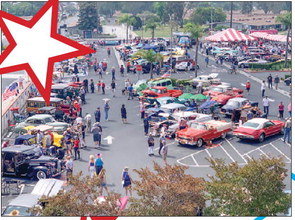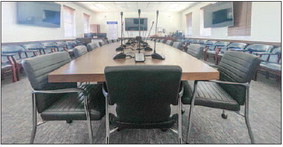THANKS


from page 1
some statement that the community’s developer, Ross Cortese, intended Leisure World to be a refuge for low-income seniors. And she mourned that her own elected GRF representatives had either willfully, or through incompetence, made Leisure World unaffordable to its residents.
Historical evidence abounds that Leisure World was not intended as a low-income housing development. Early marketing materials extolled it as “America’s prestige community for happy people over 52,” and marveled at the “country club” amenities.
However, we don’t need to depend only on overly enthusiastic promoters of Leisure World while it was being marketed nationwide. Similarly, we don’t need to put our faith in the aggrieved perception of an individual shareholder.
As we prepare to count our blessings, it’s possible you don’t even realize the developments that have made your retirement much more secure than your grandparents.
In 1960, two years before Leisure World’s first residents moved in, the median household income of a person over 65 was $2,900. That was only 51% of the overall population’s income at the time.
Sixty years later, even on an inflation-adjusted basis, senior incomes have jumped 100%, while those of the general population have only increased 53%. The result? The average senior now has not 51% of the buying power of the average U.S. household, but 68%.
The cause? Likely the guaranteed Social Security cost-ofliving increases.
In the decades you worked, wage growth stagnated compared to inflation. Last year, it happened again. Wages increased 6.4% in 2022. Seniors received an 8.7% jump in their Social Security payments.
However, you’re right in placing so much importance on inflation’s effects. That $100 mortgage payment your parents complained about in the early 1960s? With California’s housing inflation, which has wildly exceeded consumer goods inflation, that same house payment would be $5,523 today.
But remember again that you’re in Leisure World. As people often remark, insidethe- wall reality often seems the opposite of what it is outside.
In 1962, the first Leisurites were living a lifestyle an average senior couldn’t afford. The monthly out-of-pocket payment totaled about $110. That included a mortgage, interest, taxes and their assessment. While personal finance experts say it’s not good to pay more the 33% of your income on housing, that $110 represented about 45% of the average senior’s monthly household income in 1962. Was Leisure World low-income housing? Doesn’t seem so. In fact, early ‘60s news accounts claimed the average new LW resident’s income was twice that of the average senior.
After LW buyers began to pay the unit’s entire purchase price up front, the only monthly payment was for the unit’s assessment. Minus taxes, the 1962 monthly assessment would have been $322 in 2022 inflationadjusted dollars. Sixty years later, GRF has to maintain four additional clubhouses, a library and more amenities.
It must meet tightened state requirements, cope with unimagined energy costs and fulfill technology expectations that only George Jetson was contemplating at the time.
But again, because senior income gains were greater than the general U.S. population, $425 is only 10% of the average senior’s household income. 1962’s assessment ate up 15% of the average senior’s income.
And how about initial affordability? In 1962, a senior buying a Leisure World unit spent 3.5 times the average senior’s annual income on the purchase.
As the chart above shows, a Leisure World unit actually consumed a higher proportion of income than the average California house cost the average U.S. wage earner.
But my how times have changed! In 2022, a typical Leisure World unit was 6.6 times higher than the average senior’s annual income, but a Californian buying outside the wall had to use 11.4 years of average earnings to buy a median-priced house.
The facts: A Leisure World unit’s typical purchase price consumes a much smaller proportion of a typical senior’s income than buying a home outside the wall. Once you’re in, today’s LW monthly assessment consumes a third less of a typical senior’s income than in 1962.
So, I’m not saying you have to be thankful you live in Leisure World Seal Beach. You can hate the mild weather, the nearly continuous sunshine, the quick drive to the beach, the easy accessibility to one of the world’s great cities. You can miss paying to replace the roof of your house. You can detest the Recreation Department for never booking punk cover bands in the Amphitheater. You can resent that people who are worse drivers than you are allowed on Leisure World’s streets.
You don’t have to like your neighbors, their mangy dogs, their loud grandchildren; or turkey, pumpkin pie or mother’s stuffing.
But you shouldn’t hate Leisure World because you think it’s unaffordable. A walled, gated, country club community with 24-hour security, beautiful grounds, and an array of outstanding amenities for pennies on the dollar compared to on the other side of the wall? Just some of the blessings you can count this Thanksgiving.






